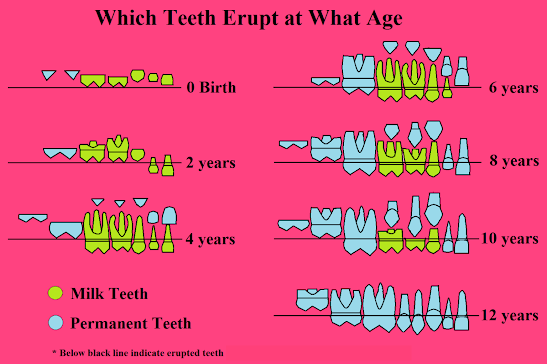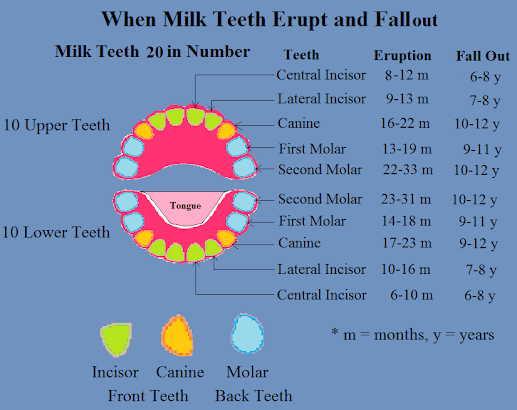Teeth Eruption: A Parent’s Guide
Most parents eagerly await their child’s first tooth eruption. However, actual teething process can bring confusion and concern. Knowing the timeline and process of teeth eruption can help parents in early identification of potential dental problems, avoiding dental crowding, and ensuring proper growth and development of their child’s jaws and face. Understanding teeth eruption also provides parents with a better understanding of their child’s oral as well as overall development.
What is Tooth Eruption?
Tooth eruption is the process where your new tooth grows and come out of your gums into your mouth. This process occurs as the tooth moves from its non-functional position in the jawbone to its final functional position in the oral cavity. It’s like when a plant grows and push its way up through the soil. When teeth erupt, they become visible and usable for biting and chewing.
Why it is important to know the eruption of teeth?
- Identifying potential dental problems, such as teething, delayed or missing teeth, dental crowding, and wisdom tooth related issues early.
- Tracking the growth and development of child’s teeth, jaws and face.
- It helps in taking decisions regarding preventive measures and treatments such as habit breaking appliances, in-time extraction of milk teeth and orthodontic treatments.
- It helps in smoother and proper alignment of permanent teeth.
- Parents can take proactive steps to ensure their child has a healthy and beautiful smile for years to come.
Eruption of teeth is a long process and plays an important role not only in oral but overall development of a child.
How Many Sets of Teeth Do Humans Have?
Humans get two full sets of teeth over the lifetime, 20 primary teeth in childhood and 28 to 32 permanent teeth in adulthood. However, the number of teeth a human being should have depends on their age and overall health.
Timeline of Teeth Eruption
The process of tooth eruption can be divided into three stages:
1. Primary dentition: Primary teeth, also known baby teeth, milk teeth or deciduous teeth. Baby teeth begin to appear at around 6 months of age and continue to erupt until around age 3. Most children will have all 20 of their primary teeth by the age of 3 years, 10 teeth in upper jaw and 10 teeth in lower jaw. Parent should take their child to see a dentist after the very first tooth eruption and no later than the child’s first birthday.
2. Mixed dentition: During this stage, both primary and permanent teeth are present in the mouth. Primary teeth will eventually be replaced by permanent teeth. Between the ages of about 6 and 7 years, the primary teeth start to shed and the permanent teeth begin to erupt. The last baby teeth usually lost around the age of 12 years. By the age of 12 to 13 years, most children have lost all of their primary teeth and have a full set of their 28 permanent teeth, except 4 wisdom teeth.
3. Permanent dentition: Permanent teeth, also known as adult teeth. The last permanent teeth, the wisdom teeth, also known as last or third molars, erupt between the ages of 17 and 21 years. In some people, wisdom teeth may not erupt at all or may become blocked, and require removal. That’s why, the permanent dentition consists of 28 to 32 teeth in total. These permanent teeth are intended to last a lifetime if they are properly cared for.
Conclusion
Teeth eruption is a normal part of growth and development. Every child is unique and may develop at a different pace. There may be variations in the number, timing, and pattern of tooth eruption, and some children may have missing or extra teeth. Teeth eruption timeline will definitely help you to ensure that your child’s oral health is developing normally. It is always best to consult with a dentist or a pediatric dentist if you have any concern regarding teeth eruption. Taking care of your child’s oral health from an early age is very crucial for their overall health and well-beings.




